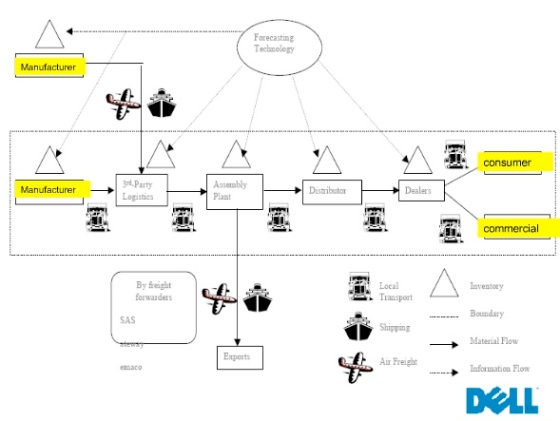Compares two different business models

Business model is one of the most important things that marketer should focus on. A business model is an “abstract representation of an organization, be it conceptual, textual, and/or graphical, of all core interrelated architectural, co-operational, and financial arrangements designed and developed by an organization presently and in the future, as well as all core products and/or services the organization offers, or will offer, based on these arrangements that are needed to achieve its strategic goals and objectives.”[1] Both in theory and real life, business model is been wildly used to describe the core aspects of organizations, such as purpose, target market, strategies and sourcing etc.
Business model design contains modeling and description of the following areas of an organization. Value proposition, target customer segments, distribution channels, customer relationships, value configurations, core capabilities, partner network, cost structure and revenue model.
There are many different types of business model such as bricks and clicks business model. This article is going to compare two different business model with examples.
Direct sales model
Direct sales model came into use in the mid- and 1800s when manufacturers noticed that they could actually sell their product directly to the customers without going through the retail stores. Thus, the products normally are ordered by the customers online or through phones instead of open a physical store and reduce the cost. The key factors lead to the success of direct selling is social network and good product.

The most important advantage of direct selling is the facts that products are selling through the channels provide by the company and the company can control the whole selling process. Moreover, it increases the opportunity for the company to provide customizations for customers.
The most famous direct sales model company is Dell.

Also the following picture list the pors and cons of Dell direct sales model.
 Value-added resellers model
Value-added resellers model
A VAR (value-added reseller) is a company that resells software, hardware and/or networking products and provides value beyond order fulfillment. To explain it in the sample way, it can be described as, if you have a product but you don’t have enough money to publish it, you meet a businessman who have enough money with good market, thus you give your product to the businessman to do it. The businessman is the VAR in this case.
The example like VAR is everywhere in our daily life. Such as JB Hi-Fi, Dick Smith, Officeworks, David Johns and Mayer etc. Nowadays, there are even VAR in hotel renting. Some people bought apartment and give it to agencies, they rent this apartments to the tourists.

The example of VAR model is Microsoft 365. While not all VAR business models are the same, you can successfully integrate Microsoft Office 365 into your practice. In fact, Monitor Group reports that VARs who resell Microsoft Office 365 can boost their operating margins in comparison to reselling equivalent on-premises or other cloud-based services. And those VARs are cutting their sales cycle in half when measured against a traditional, on-premises–oriented sales process.

Compare
The Direct sales model chooses to sell the company’s products directly from the manufactures to customers. However, the value-added resellers model tend to five their products to VAR such as some physical store to let them help the company to sell its products. These are two completely different business models. Therefore, the two companies I set as examples—Dell and Microsoft are both successful companies. Thus, it is hard to tell which business model is better, it is more depends on the situation of the company. Even using the same model, different organizations still have to set different strategies.
Reference:
- Al-Debei, M. M., El-Haddadeh, R., & Avison, D. (2008). “Defining the business model in the new world of digital business.” In Proceedings of the Americas Conference on Information Systems (AMCIS) (Vol. 2008, pp. 1-11).
- http://www.slideshare.net/yiyidhe/case3-dell-direct-fianlv2
- https://pgbarranca.wordpress.com/2010/05/23/dell-business-model-and-distribution-network/
- https://mspartner.microsoft.com/he/il/pages/solutions/downloads/office-365-value-added-reseller-guide.aspx

good
LikeLike
Good analysis
LikeLike
Good
LikeLike